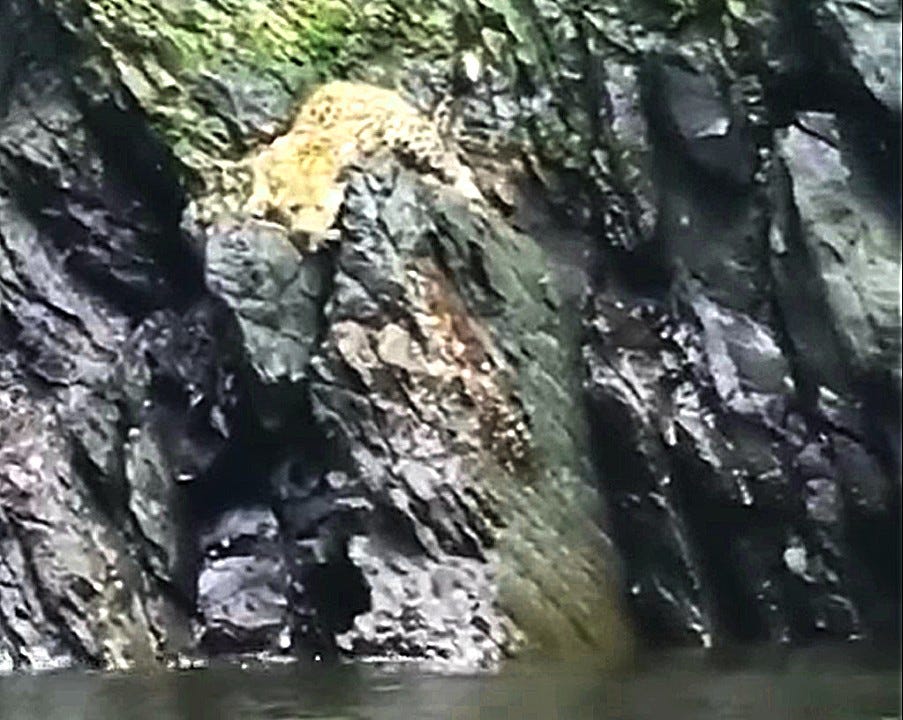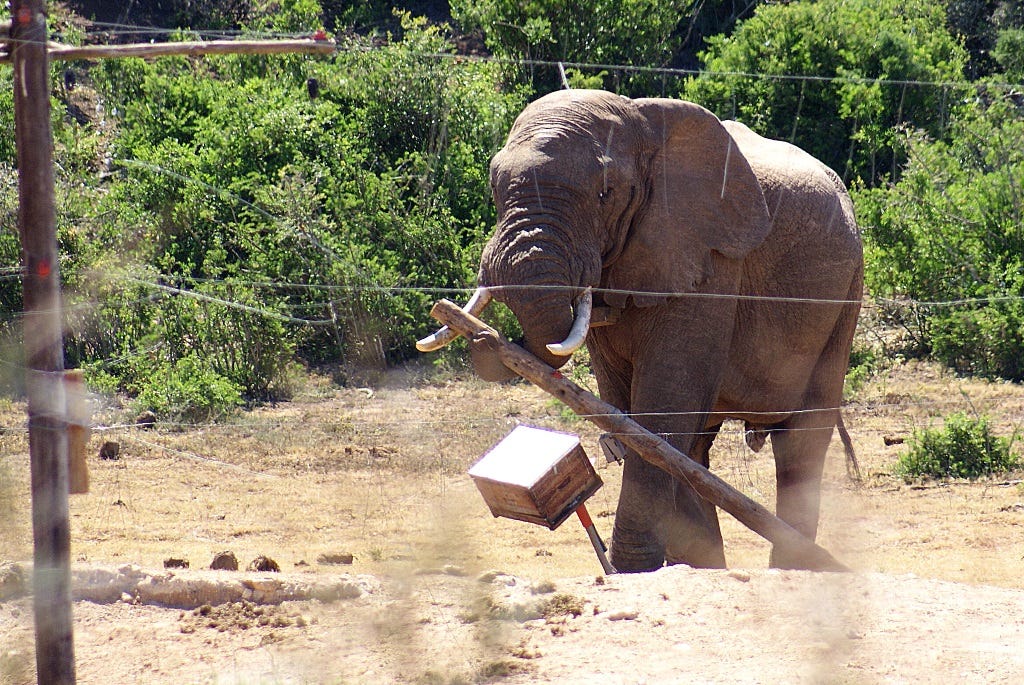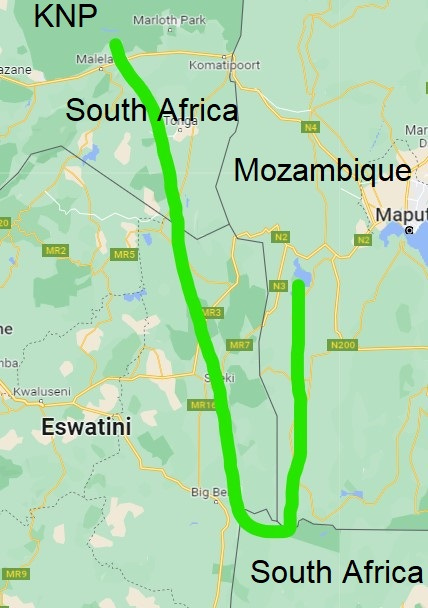
The incoming tide was already lapping at the leopard’s injured body when the rescuers arrived. They had to act creatively and quickly if they were to stand any chance of rescuing the big cat.
A few hours earlier, kayakers from a local adventure company had seen the leopard stranded on a cliff face near the mouth of the Storms River. There was no way the apparently injured leopard could have climbed up the steep face of the gorge. The river was still about a metre or so below the animal, but the tide was steadily rising.
No one seems sure how the leopard came to be on the cliff face, but SANParks rangers believe that the female leopard fell down the cliff and found herself trapped by the rising waters of the incoming tide.
Duty crews from the National Sea Rescue Institute (NSRI) in Oyster Bay and Storms River launched a rescue operation together with SANParks rangers and a veterinary surgeon.
NSRI Station Commander, Lodewyk van Rensburg said two boats equipped with a kayak and a basket stretcher were launched into the gorge. When they arrived at the scene, part of the leopard’s body was already submerged.
He said, "The leopard was darted and she immediately swam towards the boats. The kayak was positioned alongside the rescue craft. The leopard appeared to attack the kayak when a rope was lassoed around her neck to prevent her from drowning”.
They used the rope to pull the leopard onto the kayak and then onto the NSRI rescue craft.
The rescue team then loaded the sedated animal onto a vehicle and drove the 180kms to SANParks facilities in Gqeberha (Port Elizabeth). She weighed 21 kg and was about three years old.
Although the vets did their best to save her, the leopard had to be humanely euthanised as she had sustained bilateral hind limb fractures and other injuries. It is believed that she was only about three years old.
The Landmark Leopard and Predator Project said the death was particularly sad because “females have been shown to have a disproportionate population structuring impact and we ideally should be trying our best not lose more females”. It said that there were probably only about 400 adults remaining in the Eastern Cape.
Wandering elephants – the next chapter
Elephants don’t like fences. They have an deep-seated desire to wander around wherever they please and if a fence gets in their way – too bad for the fence.
There are many stories from the Mpumalanga Province of South Africa about elephants that get over electrified fences simply by pushing trees down over the fences and then simply stepping over the live wires.

In Real Safari Newsletters we have often discussed elephants and their misgivings about fences. There was the one about an elephant known as ‘Bliksem’ who used poles to flatten fences designed to keep elephants out of protected water holes. The same newsletter also tells the story about a herd of elephants that went wandering in the south of China for seventeen months. Read that one here.
There was the newsletter written by Sue Maclennan about Kambaku the elephant that went walkabout from a reserve near Makhanda, my hometown. Read about him here.
More recently, conservationists in Mozambique became aware of a herd of eleven elephant bulls that appeared to be moving in the general direction of the western border of that country. It is believed that they were originally from the Kruger National Park in South Africa and somehow found themselves in Mozambique.
The Elephants Alive animal conservation organisation darted one of the elephants, put a radio collar on him and gave him the name Trailblazer on March 30, 2022.
The elephants wandered over 500kms through southern Mozambique for about a month until they came to the far south-western corner of the country. They crossed into the KwaZulu Natal Province of South Africa in the early morning of May 1 and headed west for the Eswatini (Swaziland) border and crossed into that country two days later. The elephants appeared to enjoy the sugar cane as they moved a further 125kms in a northerly direction towards the Mpumalanga Province of South Africa.

When they crossed the border into South Africa once more on May 7 they were not able to roam as freely as before because there were many more obstacles such as fences, agricultural buildings and villages.
At one of these settlements, a community member shot at an elephant causing injury that slowed him down and made it difficult to keep up with the rest of the group. Conservation officials monitoring the progress of the herd decided they had to euthanise that bull due to the extent of his wounds.
The elephants carried on travelling, covering more than 100kms in South Africa and close to 800kms altogether since they were first collared in Mozambique.
Trailblazer was the first elephant to reach the southern boundary of the Kruger National Park (KNP) and clearly wanted to enter but could not find a way in. He moved along the fence line seeking an entrance, but never attempted to push the fence down.
Officials took the decision to dart five bulls, including Trailblazer, and load them onto trucks so they could be transported 290kms to Shingwedzi in the northern part of the KNP.
A week after their relocation, reports indicated that they had settled into their new environment and were doing well.
News about the other five bulls that formed part of the original herd of eleven are not clear at the time of writing. If you would like to follow this story, visit the Elephants Alive social media pages.
Links:
Real Safari Newsletter - Fencing Elephants
Real Safari Newsletter - Big surprise for commuters as Kambaku goes walkabout




